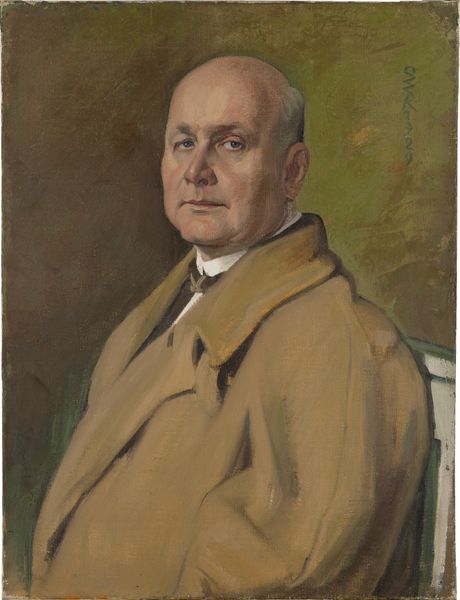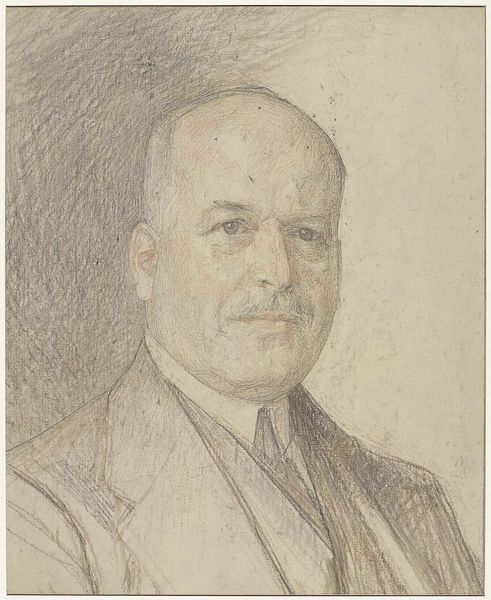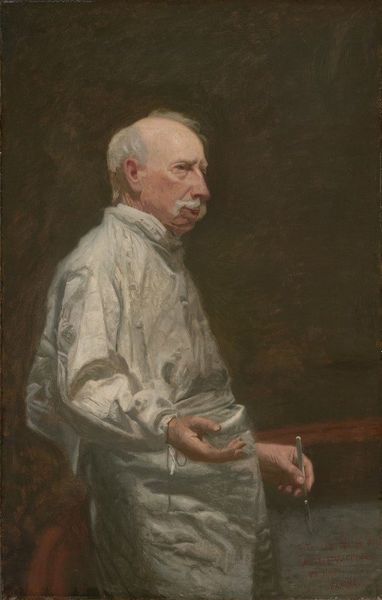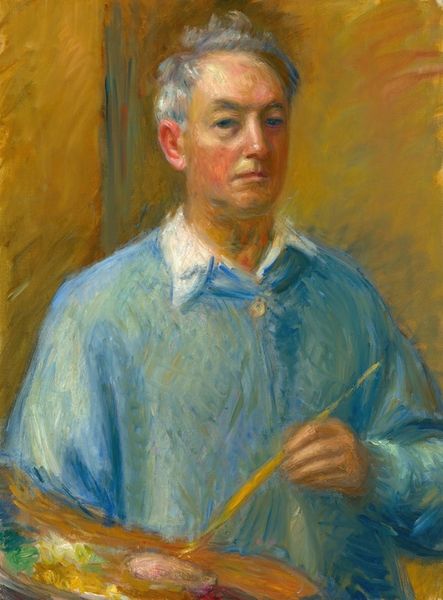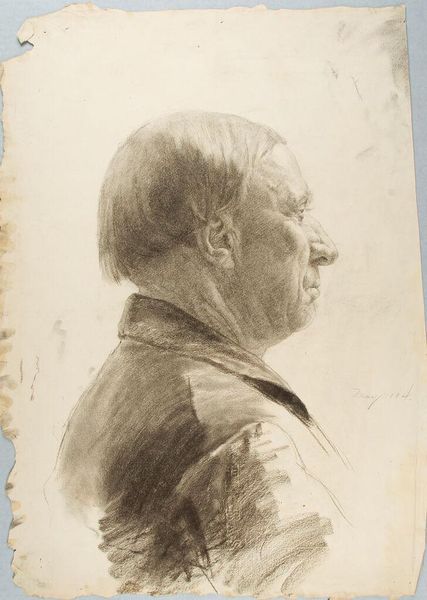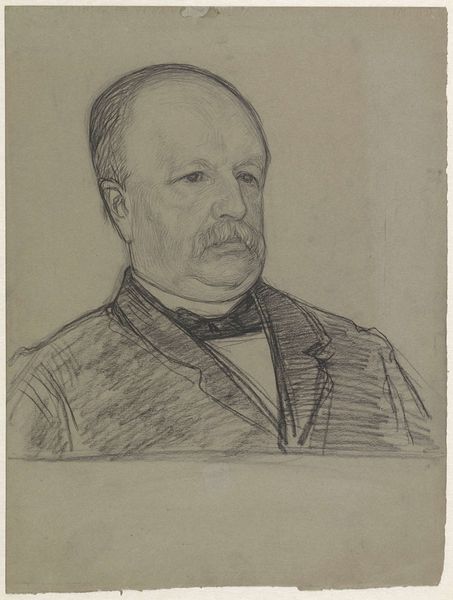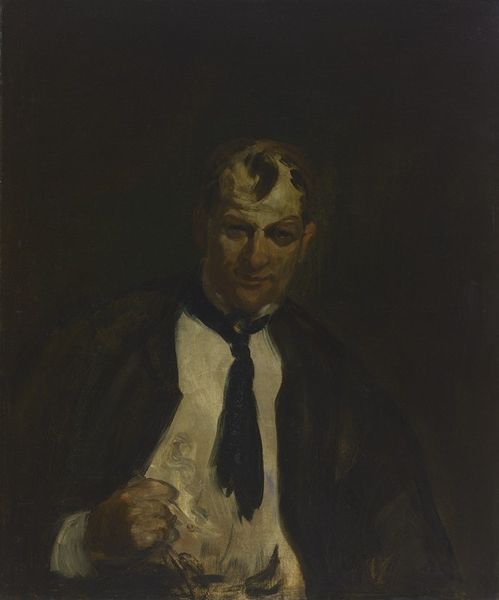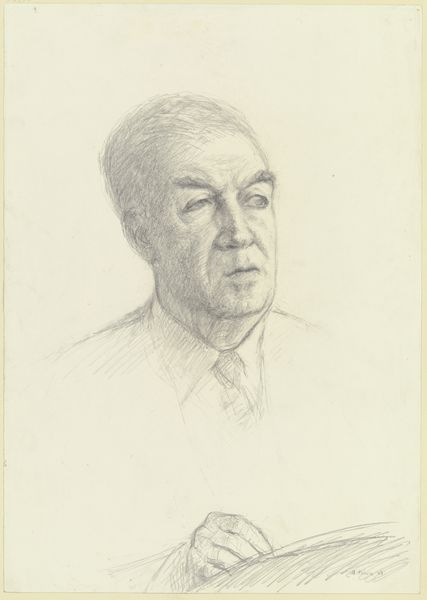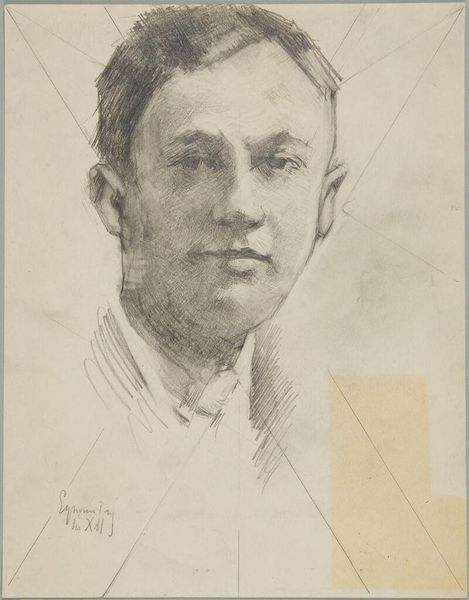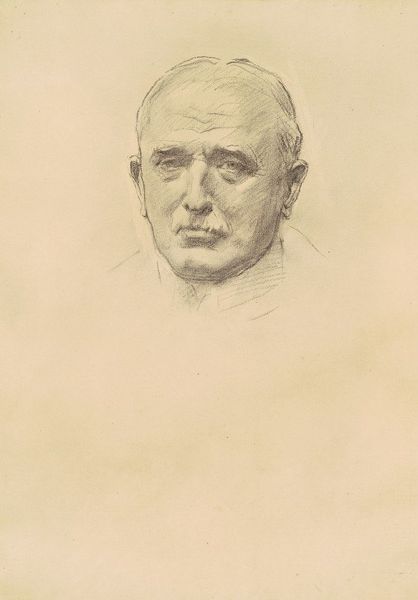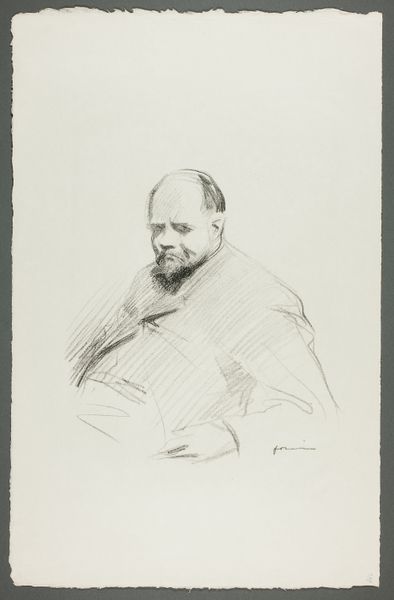
painting, oil-paint, impasto
#
portrait
#
self-portrait
#
painting
#
oil-paint
#
impasto
#
academic-art
#
modernism
#
realism
Copyright: Public domain
Curator: Here we see "Self Portrait" by William Henry Huddle, painted in 1891. Editor: My first impression is one of somberness. The muted palette and intense gaze convey a real sense of introspective gravitas. Curator: Indeed. Huddle, active primarily in Texas, created this oil painting with visible impasto, lending a tangible weight to the self-representation. Note how the plain white shirt almost suggests a sort of… uniform. Is he presenting himself as a working man? Editor: I think more likely the effect of the impasto actually contributes to the realism, giving the work an air of palpable grit and physicality. The brushstrokes around the collar, for example, construct this sense of texture, emphasizing the materiality of the garment rather than the social status it suggests. Curator: I'm interested in the relative lack of detail. We don’t have other symbolic items like spectacles or pipe here; rather a face with few flourishes. Maybe Huddle attempts here at unveiling the bare minimum of the symbolic artist stripped down. Editor: Perhaps it speaks more to a conscious austerity in the overall composition. Consider the neutral background – almost no indication of setting whatsoever. I find this deliberate constraint accentuates the raw and forthright quality of the portrait, really encouraging viewers to look past embellishment. Curator: It may also be the artist aiming for timelessness by removing identifiers to time or a particular context, maybe to suggest enduring relevance to audiences and his practice. He perhaps hints at archetypes and invites others to look closely. Editor: It makes me wonder how our understanding of art, even something as seemingly straightforward as this self-portrait, is inevitably shaped by layers of personal context, isn't it? Curator: Indeed! It offers such a clear picture of just how symbols subtly yet powerfully engage us, transcending time and place. Editor: The work offers viewers the essence of Huddle through his use of pigment, color, and form, providing insight through those key artistic ingredients, more than any constructed symbolic framework.
Comments
No comments
Be the first to comment and join the conversation on the ultimate creative platform.
